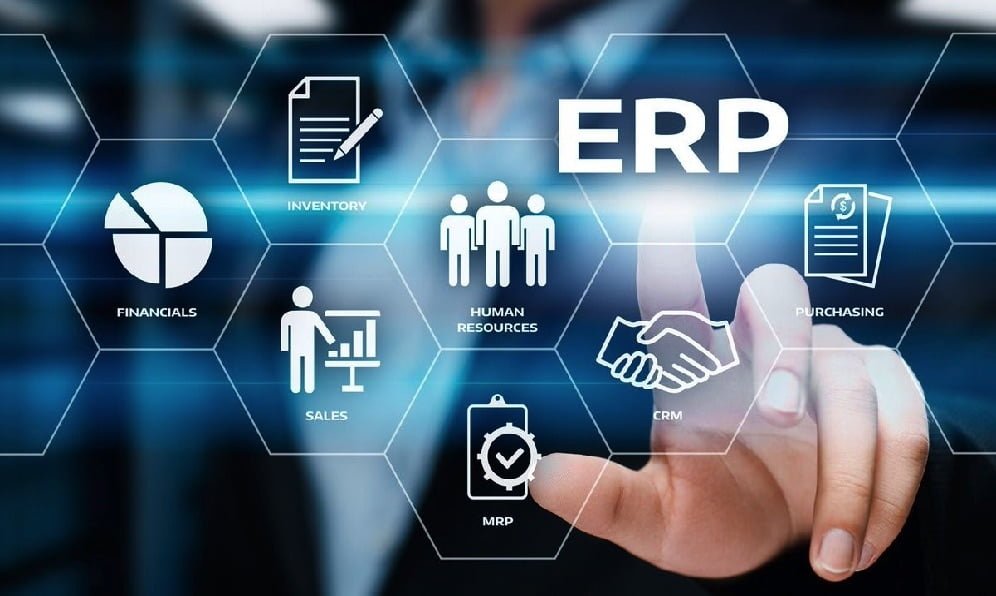Many companies are focused on implementing an ERP to solve various problems, for example, automated financial and tax accounting.
At the same time, it is often necessary to implement such a project in just a few months. ERP systems can help companies fully automate tasks related to production management, logistics, finance, reporting, and document management. Today, it is almost impossible to imagine the efficient operation of a company, especially a large company, without at least a few ERP modules.
At the same time, companies are not yet ready to spend a lot of time implementing IT projects; everything is changing too fast. Therefore, deployment in a short time is a fairly common task.
How to solve it successfully?
Deploy in the cloud today: ERP in the cloud is becoming more and more popular, whether in foreign countries, they have traditionally favored local solutions. According to data from MarketsandMarkets, the cloud ERP market will grow from $ 45.3 billion to $ 101.1 billion in 2020-2025.
Of course, the pandemic is one of the main triggers: many people find it more convenient to support remote work in the cloud. At the same time, Cloud ERP completed an excellent implementation in a few months. The environment is developed in one day and then the IT partner can start configuring the system and customers can see how it is working.
Many companies are focused on implementing an ERP to solve various problems
In turn, due to the purchase, delivery and configuration of hardware and the installation and configuration of the necessary software, the local system requires more time. Also, when it comes to synchronization, it can be seen that many processes are faster in principle when using the cloud.
For example, it is important that large companies in the financial sector comply with the audit requirements. This means that they must implement the latest version of ERP and install updates periodically to comply with the vendor’s update and support policies.
The cloud environment allows you to install the updates you need in a few hours, and the process is as simple as possible: just a few clicks and you choose the time interval in which you need to start working.
It is worth noting that some vendors, such as Microsoft in the series Dynamics 365, they are implementing a cloud strategy first: all new projects appear first in the cloud and then in the local version. From a security perspective, the cloud can also save time – setting up user access to various data and tools is quick.
ERP system standard features
Geographically dispersed companies especially appreciate it. It uses the standard functions of the system and simplifies the design process. The standard features of the ERP system save you from waiting to create the necessary tools, but you immediately start setting up the environment and working with users. In doing so, the solution typically covers most of the requirements related to business management. Of course, you don’t have to limit yourself to one solution: in the future, you will be able to quickly connect to other services and tools.
This is the advantage of a cloud system operating in an IT ecosystem: the interaction between solutions can be seamless. You should also create a design process as clear as possible so that all participants in the work know where the project is and what is required of them.
When the ERP solution is configured, it will be immediately presented to the customer. If some functions or processes do not match the processes or requirements of the company, make adjustments. But here you need to understand that if there is a difference, there are two options: change the system or change the customer process.
Modern ERP systems contain a large number of settings that allow you to fine-tune functions according to your business requirements, but you should never use settings to balance all the differences. Here, taking into account the tight deadlines, experts recommend that customers slightly change the process to avoid modifications to the system. The modification would complicate the installation of the update; the easiest way is to update the standard version of the product.
Rapid system deployment can also be facilitated by using other tools available in the cloud from a particular provider. Depending on the tasks established by the client, these can be analytical modules that simplify the preparation of reports, solutions for document processing or tools that accelerate the integration between ERP and other business systems.
–


